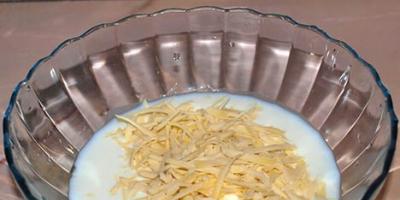At the same time, he is unusually lazy (by human standards, of course) and always seems to be half asleep. This strange creature is the arboreal marsupial (Dendrolagus). Clean, dressed in a thick soft fur coat, also has large protruding ears and an elongated muzzle, the tip of which is crowned with a hilarious snout. It is interesting that the animal sleeps not only on its stomach, like most animals, but sometimes also sitting, with its long nose dropped on its hairy belly.
Its small size (reaches a length of 60 centimeters and weighs about 7 kilograms) allows the tree kangaroo to easily hold even on thin branches. He moves deftly and confidently among the tops of twenty-meter trees. No fear of heights or dizziness attacks for you.
In general, Australia for Europeans is a parallel semi-fantastic world inhabited by the most bizarre creatures: bandicoots, wombats. This mysterious continent is truly like a huge laboratory where nature conducted incredible and daring experiments. Once upon a time, tens of thousands of years ago, Australia was connected by an isthmus with New Guinea and Southeast Asia and was completely covered with magnificent virgin forest. However, as the Earth's climate became increasingly harsh, Australia's forests began to disappear. Therefore, kangaroos had to explore new territories. Their powerful hind legs allowed them to quickly “acclimatize” to the prairies. And their brothers, who remained in the thickets, moved to the upper “floors” of the forest, which also turned out to be very convenient: it was safe and food was close at hand. So from then to this day, the habitats of tree kangaroos are the hills of New Guinea and North-East Queensland. There are two species of tree kangaroos in Australia, and about a dozen in New Guinea.

Just as some tightrope walker invented a pole to maintain balance, the tree kangaroo at one time “invented” a long and fluffy tail for balance. When a kangaroo sits on a branch, holding it tightly with its powerful, muscular hind legs, its tail hangs down freely. Being a kind of center of gravity, it gives the kangaroo stability, allowing it to exist comfortably at a height and only occasionally descend to the ground. The animal easily moves from branch to branch. This is where he sleeps and eats. Constantly living in the twilight of the forest, the tree kangaroo is not afraid of tropical downpours. They don't even bother him to sleep. The wool is located on its body in such a way that the streams flow down without lingering or accumulating on the skin.

The tree kangaroo is a nocturnal animal; its activity increases sharply with the onset of darkness. At night he comes down to feed and drink. His favorite food is fern leaves, berries and fruits. In the setting rays of the sun, when a damp fog descends on the forest, kangaroos emerge from their hiding places and begin preparations for the night vigils. The last minutes of the fading day are enlivened by the rustling, jumping and subtle movements of many night creatures. A couscous from the family passed by a family of tree kangaroos. Couscous and our hero are good neighbors. They get along well with each other, despite the fact that both live in trees and go out to “hunt” at night. But couscous feeds on tender young greens, and kangaroo prefers larger and tougher leaves. Its stomach is similar to that of any other herbivore. And the only danger that can be expected from such a peaceful creature is the danger of its waste accidentally falling on your head.

Having woken up and rubbed its sleepy eyes with its paws, the kangaroo begins to move. At first, slowly, using the tail as a kind of third paw, it clasps the trunk. Despite its external clumsiness, the kangaroo is an excellent climber. Doesn't exist for him. Trunks, branches and twigs for a kangaroo are a network of roads and paths with turns and detours familiar only to him. Not being able, like a monkey, to jump from tree to tree, a kangaroo can swing down from a height of 10, 15 and even 18 meters! On the ground it moves like a regular kangaroo. And if an unexpected danger arises, he makes several jumps to the nearest trunk, and after a moment he is back in his native element.
Up - down, right - left, random encounters with relatives. Tree kangaroos, living side by side with each other, practically do not communicate with each other. Each female kangaroo has a separate territory, the size of which allows her to find abundant food for herself and her cub. The male's territory is usually larger. Sometimes even several times. Sometimes several females live on the territory of a male. This makes it easier for him to find a girlfriend during the mating season. Moreover, this period is very short.

...A moment of love - and the partners, neglecting courtship and grateful caresses, part. Unlike primates, who tend to form long-lasting bonds, tree kangaroos date without emotion and part without sadness. The female immediately leaves after intimacy, accompanied by the baby from last year's litter. Almost as big as herself, and yet trying out of habit to climb into her mother’s bag. The mother indignantly drives the overgrown boy away, and he leaves with a feeling of irrevocable loss. Independence and freedom still scare him.

A newborn tree kangaroo, blind and weak, devoid of hair, only a couple of centimeters in size, has difficulty climbing into the pouch. He will be destined to spend about a year in it until he gains weight and acquires a coat as thick as his mother’s. An ordinary kangaroo, by the way, feeds its cub for no more than six to eight months. But, apparently, its arboreal counterpart develops as slowly as it moves. He is phlegmatic, unhurried, his life proceeds at a special, slow pace. He sleeps half his life. Sometimes it seems that the leaves it eats contain sleeping pills. As it turns out, there is some truth in this. But toxic substances contained in the leaves are neutralized in the animal’s body. Moreover, the kangaroo eats little, compensating for the lack of calories with sleep and a minimum of movements.
Moving at a speed of less than 1 km/h, constantly being as if between sleep and reality, this mysterious creature has achieved a kind of harmony. So, up and down, left and right, random encounters with relatives...
Tree kangaroo - this animal bears some resemblance to a bear. It belongs to the class of mammals, to the order of marsupials, to the family of kangaroos. Their lifespan is 20 years.
The total length of the tree kangaroo is from 1.3 to 1.8 meters. The length of the body (including the head) ranges from 50 to 80 centimeters, and the length of the tail - 50 to 90 centimeters. The animal can weigh from 5 to 18 kilograms.
He has thick, silky fur, the length of which is the same from the shoulders to the tail. The lower part of his body is mostly covered with fur. white, and the top one is gray-brown and black (stripes on the back). Tree kangaroos have long lower limbs with a wide sole. Each paw has soft pads and curved claws, which help them climb trees by clinging to the tree trunk.
Their muzzle, compared to other breeds, is slightly shortened, and their ears are rounded. The tail of such kangaroos is quite strongly lowered down. Externally, it is difficult to distinguish a male from a female; they are almost the same in size.
These animals live on the islands of New Guinea, in tropical forests, in the northeastern part of Queensland (Australian state), as well as nearby islands. They mostly live in mountainous areas, although some live on the plains.
In the wild, tree kangaroos typically feed on leaves, fruits and flowers. If kept in captivity, they can eat apples, carrots, tofu, celery, eggs (hard-boiled), various tree branches (elm, willow and others).
Tree kangaroos are usually nocturnal, and during the day they sleep (approximately 15 hours a day). Often these animals live either alone or in small groups, which usually consist of a male and female with cubs.
They are able to support normal temperature your body at any time of the year. In addition, they do not sweat, and by licking themselves, tree kangaroos are protected from overheating in hot weather.
They spend most of their lives in trees. They come down only to eat and drink. They jump from one tree to another, the distance between them can be up to 9 meters, down to a distance of up to 18 meters.
How do tree kangaroos live? most living in trees, they protect themselves from enemies such as people (some tribes), who can sometimes hunt them, although they are rare animals. In addition to people, they also have terrestrial enemies - these are predators, mainly dingoes and the amethyst python, and they pose a significant threat to their lives.
Kangaroos breed throughout the year; they do not have a specific season. The duration of pregnancy is 32 days. Usually one cub is born, which then spends about a year in the mother’s pouch. During this period, it is firmly attached to the mother's nipple, through which milk periodically splashes into the baby's mouth.
Conservation authorities in Australia and New Guinea monitor tree kangaroo numbers. Some of their species are included in the list of rare and endangered animals. Protected areas have been created to preserve them.
These are very cute and interesting animals, but don’t let their cute appearance fool you. Some species of wallabies are not much different from bears. Oh, how beautiful Mother Nature and her creations are!
There are 6 species belonging to the genus of Tree kangaroos - wallabies. Of these, New Guinea is inhabited by the bear wallaby, the Matchisha wallaby, which has a subspecies of the Goodfellow wallaby, and the Doria wallaby. In Australian Queensland there are Lumholtz's wallaby (bungari), Bennett's wallaby, or tharibina.
Their original habitat was New Guinea, but now wallabies are also found in Australia. Tree kangaroos live in tropical forests of mountainous regions, at altitudes from 450 to 3000m. above sea level. The body size of the animal is 52-81 cm, the tail is from 42 to 93 cm long. Wallabies weigh, depending on the species, from 7.7 to 10 kg for males and from 6.7 to 8.9 kg. females.

Wallabies are covered with long fur, soft or coarse. The color depends on the specific species. Thus, the bear tree wallaby has a brown, black or gray saddle coat on its back and a red or white belly and sides.

Wallabies Doria and Bennett have tan marks on their fur Brown. At the same time, Bennett's wallaby has a small “bang” on its forehead, raised fur on its back, and a red patch of fur near its tail. Lumholtz's wallaby is contrastingly colored: black legs, gray or red back, white belly.

Wallabies live in flocks, in which for one male there are several females with offspring. Sometimes related males can form groups to confront aggressive outside males. In Lumholtz's tree kangaroos, peace in the flock depends on the number of males: with one male, the females live quietly together, but when a second one appears, battles begin.

Matchisha's wallaby is the most colorful kangaroo: the back is red-brown, red, and the rest of the body is yellow. Its variety, the Goodfellow wallaby, has yellow stripes on its body and tail.

The number of tree kangaroos is monitored by conservation authorities in Australia and New Guinea. Lumholtz's, Bennett's, Doria's, Matchish's and bear's wallabies are listed as rare and endangered. Protected areas have been created to preserve them.

Tree kangaroos have strong front and rear legs with curved claws, and pads on the feet. The tail serves them for support and balance. The animals are very mobile, deftly climb trees, can jump up to 18 m down, and up to 10 m from tree to tree.

Wallabies are nocturnal animals that sleep in trees during the day. After dark, wallabies turn tail first and descend to the ground, where they move by jumping, arching their tail. At night, kangaroos look for food in the form of fruits, ferns, leaves and shoots of plants.

Wallabies can mate all year round. Kangaroos carry their babies for 32 days. The newborn (usually alone) immediately crawls into the mother's brood pouch. There, its development continues for about 300 days, but the baby kangaroo suckles its mother for about 100 more days after leaving the pouch.

Wallabies are highly tamed. Depending on the species, their lifespan is 14-20 years.
Kangaroos are the most famous marsupial animals, which personify the entire order of Marsupials in general. Nevertheless, the vast family of kangaroos, numbering about 50 species, stands apart in this order and keeps many secrets.
Red kangaroo (Macropus rufus).
Externally, kangaroos do not resemble any animal: their head resembles that of a deer, the neck is of medium length, the body is slender in the front and widens in the back, the limbs are of different sizes - the front ones are relatively small, and the back ones are very long and powerful, the tail is thick and long. The front paws are five-fingered, have well-developed toes, and look more like a primate hand than a dog's paw. Nevertheless, the fingers end in rather large claws.

The front paw of a large gray or forest kangaroo (Macropus giganteus).
The hind feet have only four toes ( thumb reduced), with the second and third fingers fused. The kangaroo's body is covered with short, thick hair, which protects the animals well from heat and cold. The color of most species is protective - gray, red, brown, some species may have white stripes. The sizes of kangaroos vary widely: the largest red kangaroos reach a height of 1.5 m and weigh up to 85-90 kg, and the smallest species are only 30 cm long and weigh 1-1.5 kg! All types of kangaroos are conventionally divided into three groups by size: the three largest species are called gigantic kangaroos, the medium-sized kangaroos are called wallabies, and the smallest species are called rat kangaroos or kangaroo rats.
The brush-tailed kangaroo (Bettongia lesueur) is a representative of the small rat kangaroos. Due to its tiny size, it can easily be mistaken for a rodent in appearance.
The kangaroo's habitat covers Australia and the adjacent islands - Tasmania, New Guinea, and kangaroos are also acclimatized in New Zealand. Among kangaroos, there are both species with a wide range, living throughout the continent, and endemics, found only in a limited area (for example, in New Guinea). The habitat of these animals is very diverse: most species inhabit open forests, grassy and desert plains, but there are also those that live... in the mountains!
Mountain kangaroo, or wallaroo (Macropus robustus) among the rocks.
It turns out that kangaroos among the rocks are a common sight; for example, mountain wallabies can rise to the level of the snow.
A kangaroo in a snowdrift is not such a rare occurrence.
But the most unusual are tree kangaroos, which live in dense forests. They spend most of their lives on tree branches and very deftly climb in the crowns, and at times jump over trunks in short jumps. Considering that their tail and hind legs are not at all tenacious, then such balancing is amazing.
Goodfellow's tree kangaroo (Dendrolagus goodfellowi) with baby.
All types of kangaroos move on their hind legs; while grazing, they hold their body horizontally and can rest their front paws on the ground, while alternately pushing off with their hind and forelimbs. In all other cases, they hold the body in an upright position. Interestingly, kangaroos are not able to move their paws sequentially, as other two-legged animals (birds, primates) do and push off the ground with both paws at the same time. For this reason, they cannot move backwards. Actually walking is unknown to these animals; they move only by jumping, and this is a very energy-consuming method of movement! On the one hand, kangaroos have phenomenal jumping ability and are able to make jumps several times greater than their body length, on the other hand, they spend a lot of energy on such movement, so they are not very durable. Large species of kangaroo can maintain a good pace for no more than 10 minutes. However, this time is enough to hide from enemies, because the length of the jump of the largest red kangaroo can reach 9 and even 12 m, and the speed is 50 km/h! Red kangaroos can jump up to 2 m in height.

The jumps of the red kangaroo amaze with their power.
Other species have more modest achievements, but in any case, kangaroos are the fastest animals in their habitat. The secret of such jumping ability lies not so much in the powerful muscles of the paws, but in... the tail. The tail serves as a very effective balancer during jumping and as a fulcrum when sitting, leaning on the tail, these animals relieve the muscles of the hind limbs.
Kangaroos often rest lying on their sides in a sybaritic pose, comically scratching their sides.
Kangaroos are herd animals and live in groups of 10-30 individuals, with the exception of the smallest rat kangaroos and mountain wallabies, which live alone. Small species are active only at night, large ones can be active during the day, but still prefer to graze in the dark. There is no clear hierarchy in the kangaroo herd and in general their social connections are not developed. This behavior is due to the general primitiveness of marsupials and the weak development of the cerebral cortex. Their interaction is limited to monitoring their brothers - as soon as one animal gives an alarm signal, the rest take to their heels. The kangaroo's voice is similar to a hoarse cough, but their hearing is very sensitive, so they hear a relatively quiet cry from afar. Kangaroos do not have homes, with the exception of rat kangaroos, which live in burrows.
The yellow-footed rock wallaby (Petrogale xanthopus), also called the ring-tailed or yellow-footed kangaroo, has taken a fancy to the rocks.
Kangaroos feed on plant foods, which they can chew twice, regurgitating part of the digested food and chewing it again, like ruminants. The kangaroo's stomach has a complex structure and is populated with bacteria that facilitate the digestion of food. Most species feed exclusively on grass, eating it in large quantities. Tree kangaroos feed on leaves and fruits of trees (including ferns and vines), and the smallest rat kangaroos can specialize in eating fruits, bulbs and even frozen plant sap, and they can also include insects in their diet. This brings them closer to other marsupials - possums. Kangaroos drink little and can go without water for a long time, being content with the moisture of plants.
Female kangaroo with baby in pouch.
Kangaroos do not have a specific breeding season, but their reproductive processes are very intense. In fact, the female’s body is a “factory” for the production of its own kind. Excited males engage in fights, during which they lock their front paws together and hit each other hard in the stomach with their hind paws. In such a fight, the tail plays an important role, on which the fighters literally rely on their fifth leg.
Male great gray kangaroos in a mating match.
Pregnancy in these animals is very short, for example, female gray giant kangaroos carry a baby for only 38-40 days; in small species this period is even shorter. In fact, kangaroos give birth to underdeveloped embryos 1-2 cm long (in the most large species). It is surprising that such a premature fetus has complex instincts that allow it to independently (!) reach the mother’s pouch. The female helps him by licking a path in the fur, but the embryo crawls without outside help! To appreciate the scale of this phenomenon, imagine if human children were born 1-2 months after conception and independently found their mother's breasts blindly. Having climbed into the mother's pouch, the baby kangaroo attaches itself to one of the nipples for a long time and spends the first 1-2 months in the pouch.
These are very cute and interesting animals, but don’t let their cute appearance fool you. Some species of wallabies are not much different from bears. Oh, how beautiful Mother Nature and her creations are!
There are 6 species belonging to the genus of Tree kangaroos - wallabies. Of these, New Guinea is inhabited by the bear wallaby, the Matchisha wallaby, which has a subspecies of the Goodfellow wallaby, and the Doria wallaby. In Australian Queensland there are Lumholtz's wallaby (bungari), Bennett's wallaby, or tharibina.
Their original habitat was New Guinea, but now wallabies are also found in Australia. Tree kangaroos live in tropical forests of mountainous regions, at altitudes from 450 to 3000m. above sea level. The body size of the animal is 52-81 cm, the tail is from 42 to 93 cm long. Wallabies weigh, depending on the species, from 7.7 to 10 kg for males and from 6.7 to 8.9 kg. females.
Wallabies are covered with long fur, soft or coarse. The color depends on the specific species. Thus, the bear tree wallaby has a brown, black or gray saddle coat on its back and a red or white belly and sides.
Doria and Bennett wallabies have brown markings on their fur. At the same time, Bennett's wallaby has a small “bang” on its forehead, raised fur on its back, and a red patch of fur near its tail. Lumholtz's wallaby is contrastingly colored: black legs, gray or red back, white belly.
Wallabies live in flocks, in which for one male there are several females with offspring. Sometimes related males can form groups to confront aggressive outside males. In Lumholtz's tree kangaroos, peace in the flock depends on the number of males: with one male, the females live quietly together, but when a second one appears, battles begin.
The Matchisha wallaby is the most colorful kangaroo: the back is red-brown, red, and the rest of the body is yellow. Its variety, the Goodfellow wallaby, has yellow stripes on its body and tail.
The number of tree kangaroos is monitored by conservation authorities in Australia and New Guinea. Lumholtz's, Bennett's, Doria's, Matchish's and bear's wallabies are listed as rare and endangered. Protected areas have been created to preserve them.
Tree kangaroos have strong front and rear legs with curved claws, and pads on the feet. The tail serves them for support and balance. The animals are very mobile, deftly climb trees, can jump up to 18 m down, and up to 10 m from tree to tree.
Wallabies are nocturnal animals that sleep in trees during the day. After dark, wallabies turn tail first and descend to the ground, where they move by jumping, arching their tail. At night, kangaroos look for food in the form of fruits, ferns, leaves and shoots of plants.
Wallabies can mate all year round. Kangaroos carry their babies for 32 days. The newborn (usually alone) immediately crawls into the mother's brood pouch. There, its development continues for about 300 days, but the baby kangaroo suckles its mother for about 100 more days after leaving the pouch.
Wallabies are highly tamed. Depending on the species, their lifespan is 14-20 years.
Source - http://4tololo.ru/content/769 

Kangaroo Goodfellow(lat. Dendrolagus goodfellowi) is a large tree kangaroo endemic to New Guinea. The specific name is given in honor of the British naturalist Walter Goodfellow (1866-1953)
Found in mid-mountain regions of the Cordillera Central. The distribution range in height is from 0 to 2860 meters above sea level. Inhabits mid- and high-mountain tropical forests. Leads a solitary, nocturnal lifestyle. Good, but slowly climbs trees, jumps from one tree to another without any problems. It moves awkwardly on the ground due to its short hind legs and is unable to jump. It feeds on leaves, seeds, fruits, roots and other plant food.
The maximum recorded lifespan for the species is over 21 years.
The species is threatened by hunting by local people for meat, as well as habitat loss resulting from the use of local forests for timber and timber, and slash-and-burn agriculture and coffee plantations, fields of rice and wheat. Found in several protected areas.
Source - https://ru.wikipedia.org/wiki

The appearance, lifestyle and behavior of these marsupials almost do not fit into the usual ideas of what real kangaroos should be like. Soft chestnut-colored fur, a small rounded head, short hind legs, the ability to masterfully climb trees - this and much more distinguishes tree kangaroos from their relatives living on the ground.
Among their branch-climbing brethren, Goodfellow's tree kangaroos (lat. Dendrolagus goodfellowi) - the cutest. This feature was also noticed by Australian biologist Tim Flannery, who studied tree kangaroos in New Guinea for many years. That is why Goodfellow Flannery gave the name to one of the subspecies of tree kangaroos Dendrolagus goodfellowi pulcherrimus, which means “most beautiful” in Latin.
Of the twelve species of tree kangaroos, ten live in the tropical forests of New Guinea, spreading between the plains and highlands, and two more species have moved to the north of the Australian mainland. Goodfellow's tree kangaroos preferred to climb higher, choosing for life the inaccessible foggy forests in the southeast of New Guinea, hiding in the labyrinths of the Owen Stanley mountain range at an altitude of seven hundred to two and a half thousand meters above sea level.
The arboreal lifestyle left its mark not only on the appearance of Goodfellow's kangaroos, but also on their habits and manner of movement. Their hind legs are not as long as those of ordinary kangaroos, and their front legs, powerful with wide soles, are equipped with tenacious, downward-curved claws.
A strong fluffy tail, more than eighty centimeters long, helps to balance between branches and make almost ten-meter jumps.
Goodfellow's tree kangaroos are not only excellent climbers, but also hardy, robust animals with strong bones. To avoid meeting their main enemy, the New Guinea harpy, they do not hesitate to jump from a height of twenty meters, remaining completely unharmed. However, once on earth, our heroes turn into clumsy, helpless creatures. Unable to make more than two long leaps in a row, Goodfellow's tree kangaroos move in small steps, bouncing and stretching their torso forward to balance the heavy tail that pulls them back.
Hunger forces tree kangaroos to descend to the ground: in addition to leaves, these marsupials are not averse to feasting on green grass, flowers, and even the occasional juicy cereal, for which they make long journeys to the outskirts of the forest. Special bacteria living in their stomach help them digest the huge amount of cellulose contained in plants eaten overnight.
Having returned to their native element among the tree branches, kangaroos are transformed: all their movements become fast, dexterous, and confident. To climb to the very crown in a matter of minutes, they just need to grab the tree trunk with their front paws and push upward from it with their hind paws in short, powerful movements. For their ability to masterfully climb trees, tree kangaroos are often called “marsupial monkeys.”
Source - http://www.zoopicture.ru/dendrolagus/ 


























































